It’s been a few years since I was tasked with shooting a vertical spot, especially one that was just a vertical spot, with no need to also save for delivering in 1:1 for social or 16:9 for broadcast. Shooting for all these formats simultaneously presents significant challenges and tends to make your images appear more generic in design. Before the emergence of Snapchat, TikTok, and Instagram stories, I primarily used vertical frames to attain a higher resolution for greenscreen work. But for this new job, I was interested in the creative possibilities it could offer.
One way to shoot vertically is to simply set up frame lines for the 9:16 image in your monitor and then crop the vertical image from your 16:9 frame. It simplifies the camera build and makes shooting handheld, Steadicam, or any other remote camera platform easy. However, this approach limits you to wider lenses and reduces your resolution; but worst of all, everything looks kinda flat.
The other way to approach this is to turn the camera on its side via a 90º plate or a 3-axis head. It’s relatively straightforward. You basically build all as normal, attach the build to a 90º plate, and click into your support on its side. You then operate via the onboard monitor. This works great when you are shooting everything off a dolly or tripod, but what about if you are shooting handheld? I never had to figure this out before, but now I did, and it took a lot of brainstorming from various people to come up with a solution. Here’s what we did…
We were using the Alexa 35 camera, and to our surprise, there were very few options for vertical cage configurations. Arri Rentals had only one option available in North America, located in their NY office. Unfortunately, they couldn’t provide it for some reason, so we had to find an alternative, but fortunately for us, the team at BeCine was determined to find a solution for us.
We quickly realized that the standard studio cage didn’t align with most other Alexa family parts, so borrowing from a Mini or LF wasn’t an option. Additionally, the standard plates on the cage were too narrow and lacked adaptability. We reached out everywhere for advice, and one major camera house even offered their custom CNC’ed vertical cage, but it turned out that their new (untested) mount didn’t actually fit the camera, and it needed to be rethought. That made us shift back to the basics.
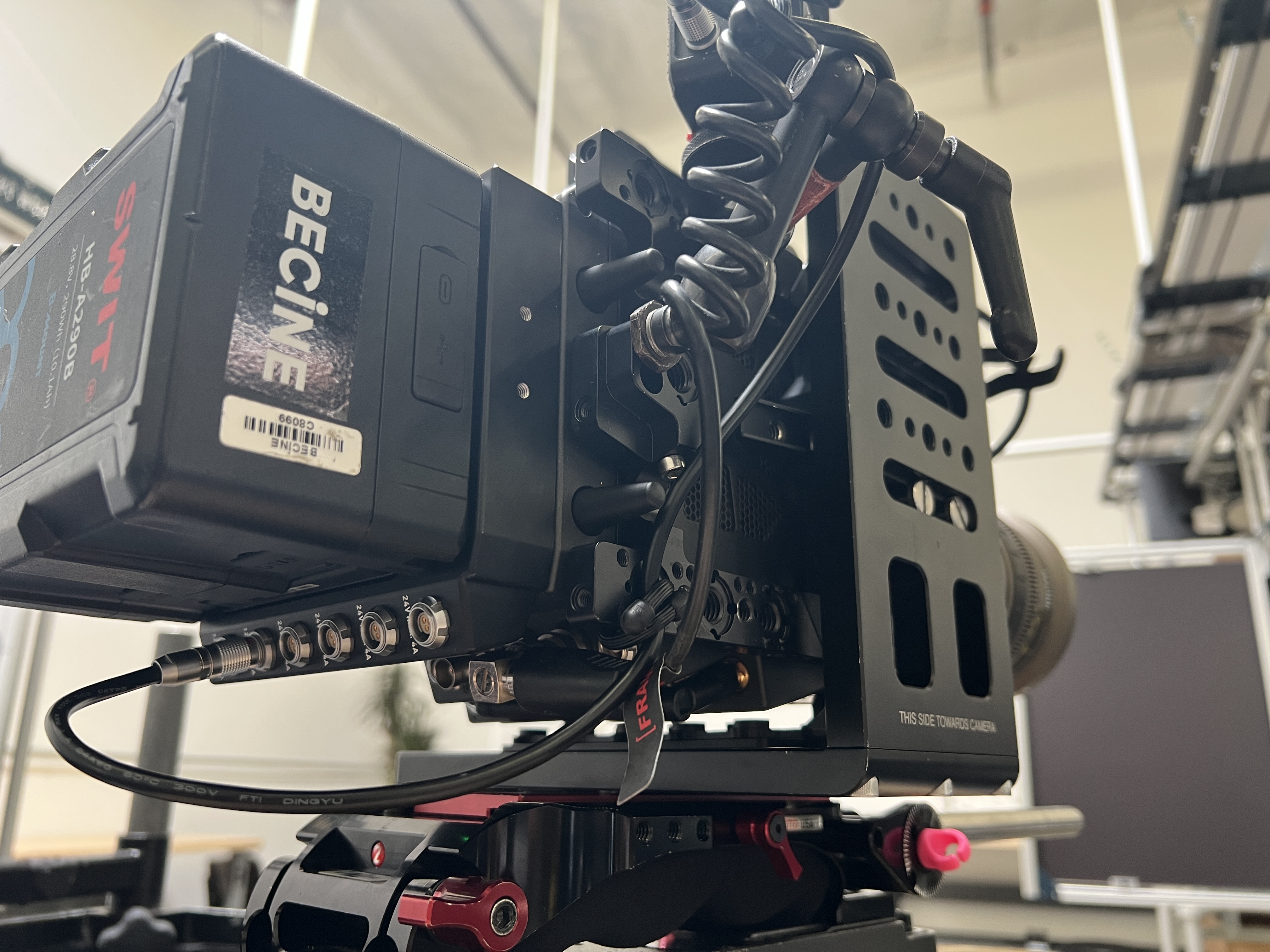
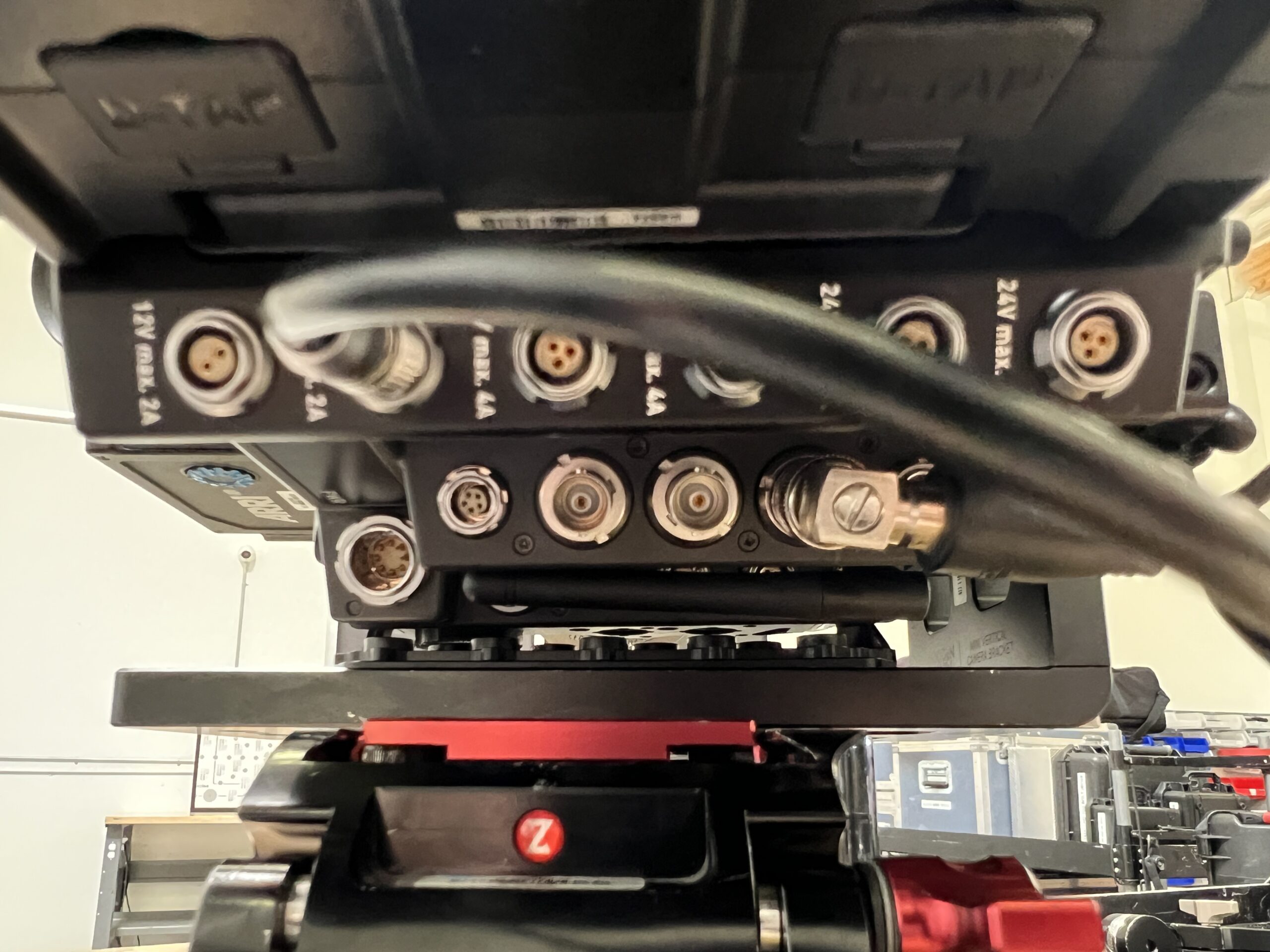
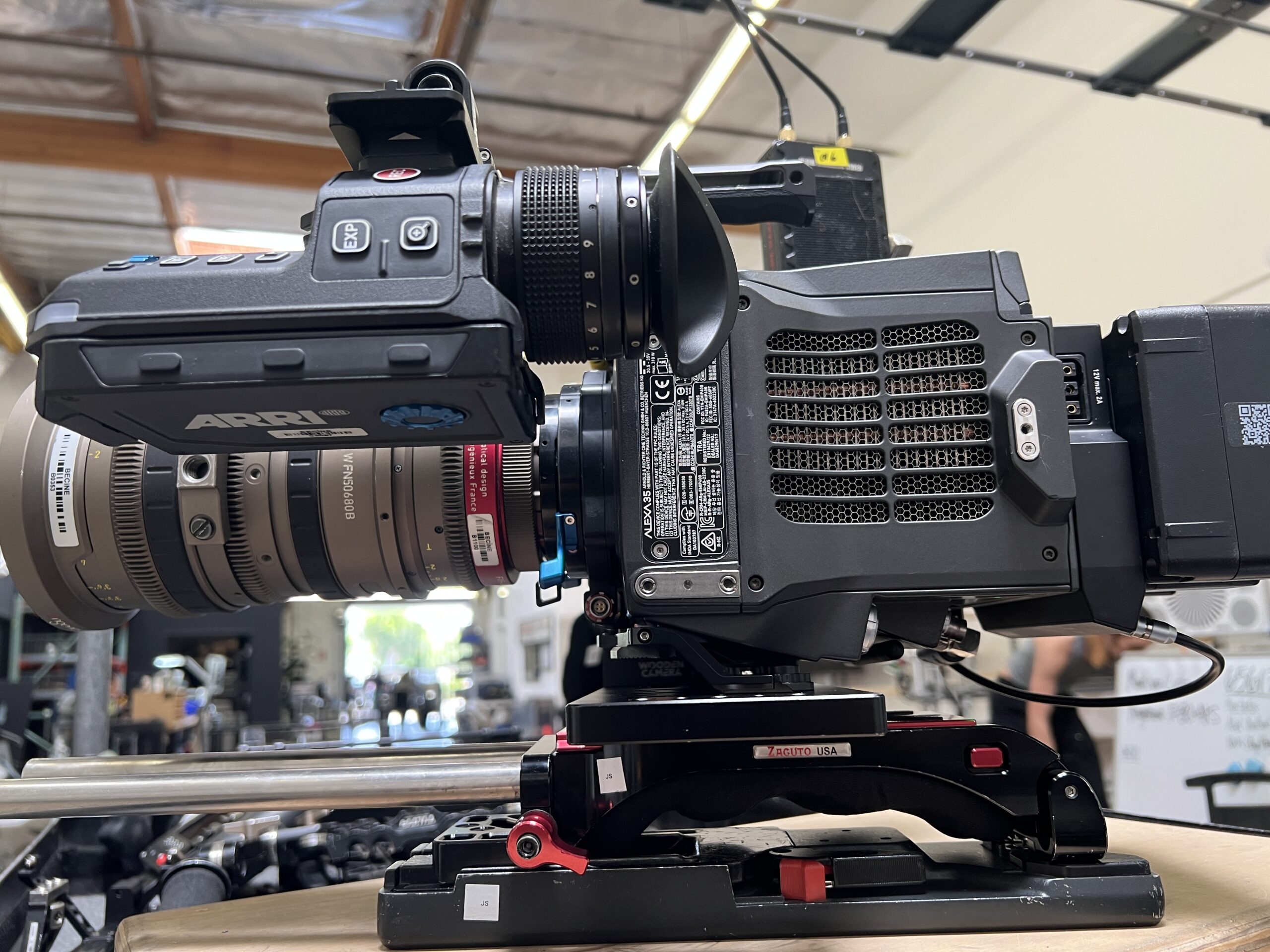
My main concern was getting the EVF set up for handheld shooting, but that’s a later point. We needed a sturdy build with more than one point of contact, so we opted for the small Wooden Camera 90º plate. This one actually lined up with 2 sides of the camera and was very durable.
Next, we needed a baseplate that could attach to the plate, offering adjustable offset, rail mounts, and a shoulder pad for handheld shooting. We chose the highly modular Zacuto VCT PRO Baseplate.
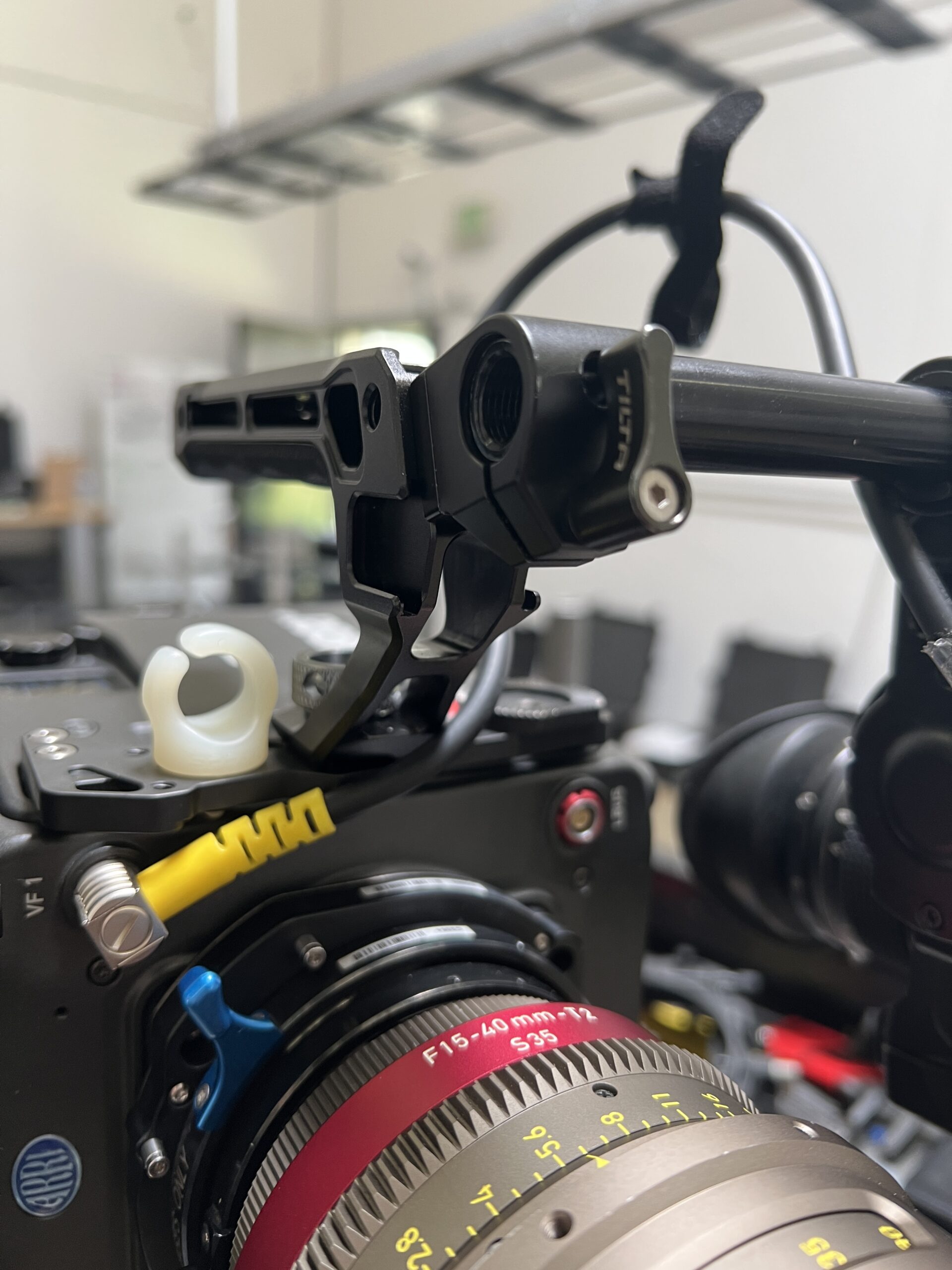
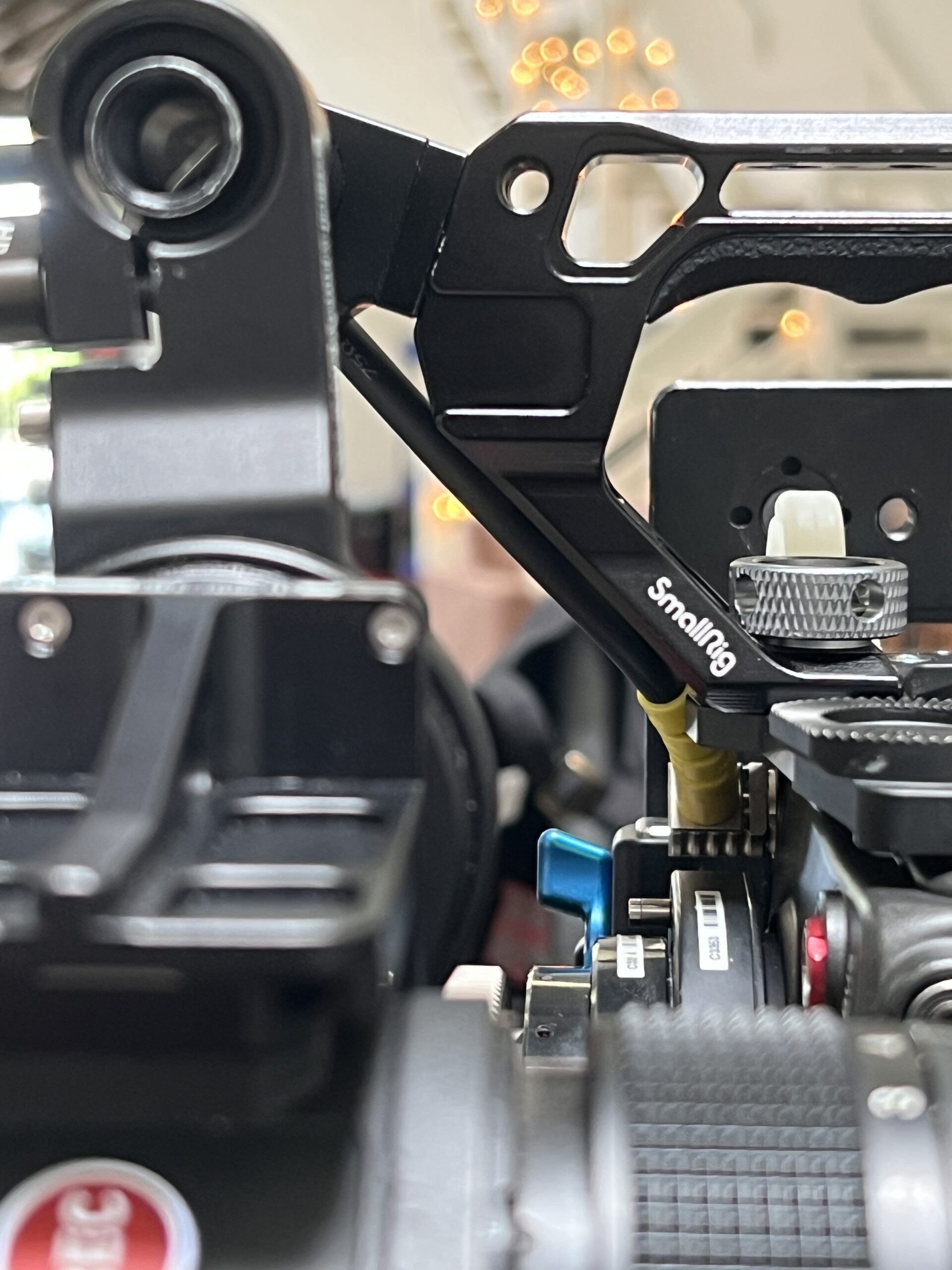
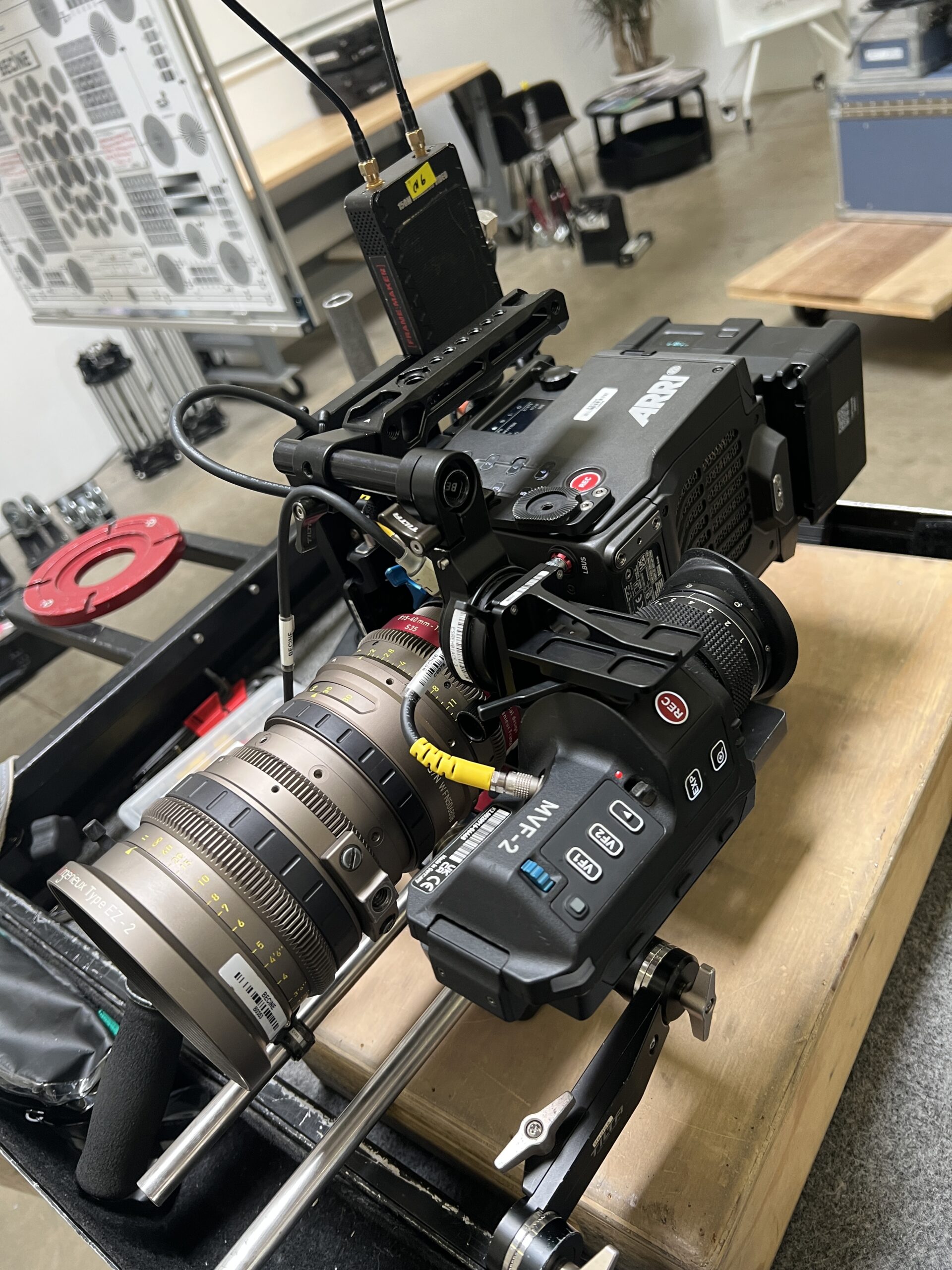
With the camera mounted sideways, the two biggest challenges were ahead. The first was getting a top handle attached. We assumed other Arri top-handle kits would fit into the hole pattern on CSB-1L side plate, but none did. The spacing on the new Alexa 35’s screw sets is unique, so we had to go with a single bolt/pin option. Unfortunately, I had given away my Arri CTH-1 years ago, but I did have a universal SmallRig handle with a 15mm road clamp on it, and it worked great!
The most significant challenge was the EVF. This puzzled MANY of us. After trying several times to attach the square-stock Alexa 35 clamp to the side plate, it proved too unstable (and rickety). Since this would be a documentary-style shoot, we needed a solid setup.
After some internet research, I stumbled upon an image of a Mini LF set up vertically with a basic single-pin handle that used the Alexa Mini’s cross-pipe EVF bracket to mount it on the side of the camera. The final item was the 90º Arri viewfinder mount. This is essential if you want to use your EVF in a vertical configuration. Fortunately, this is an item most shops have in stock.
In the end, everything worked out perfectly. The camera was stable, and the client appreciated the ability to use a bigger range of lenses.
This was the first time I had seen this done completely, and I was pleased that we managed to make it work without the proper Arri vertical kit.
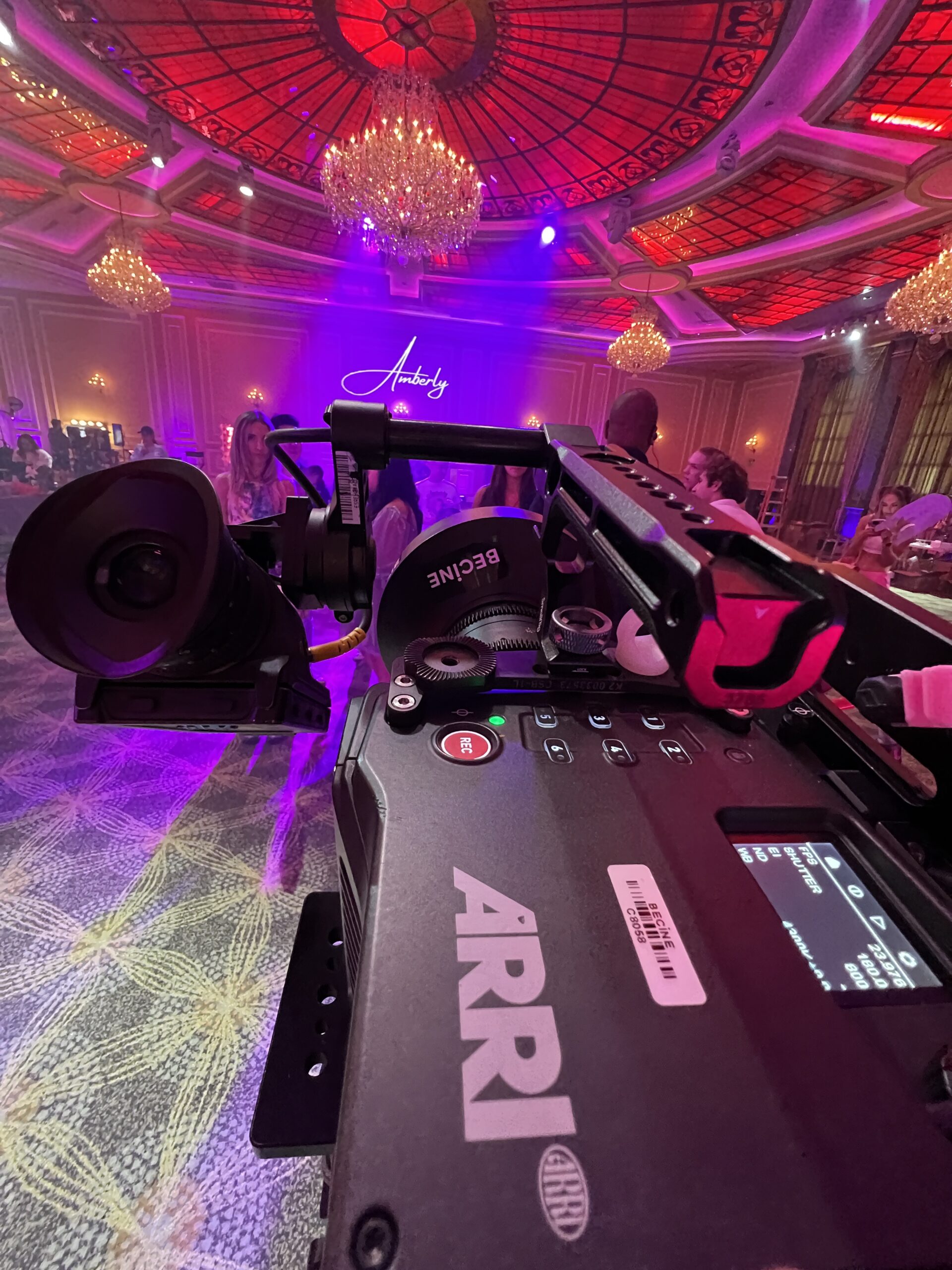


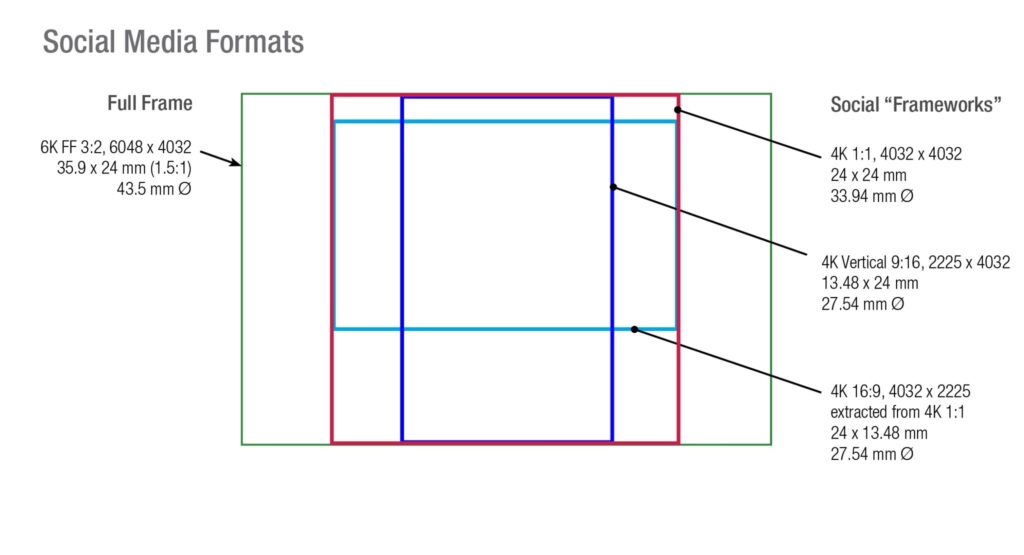
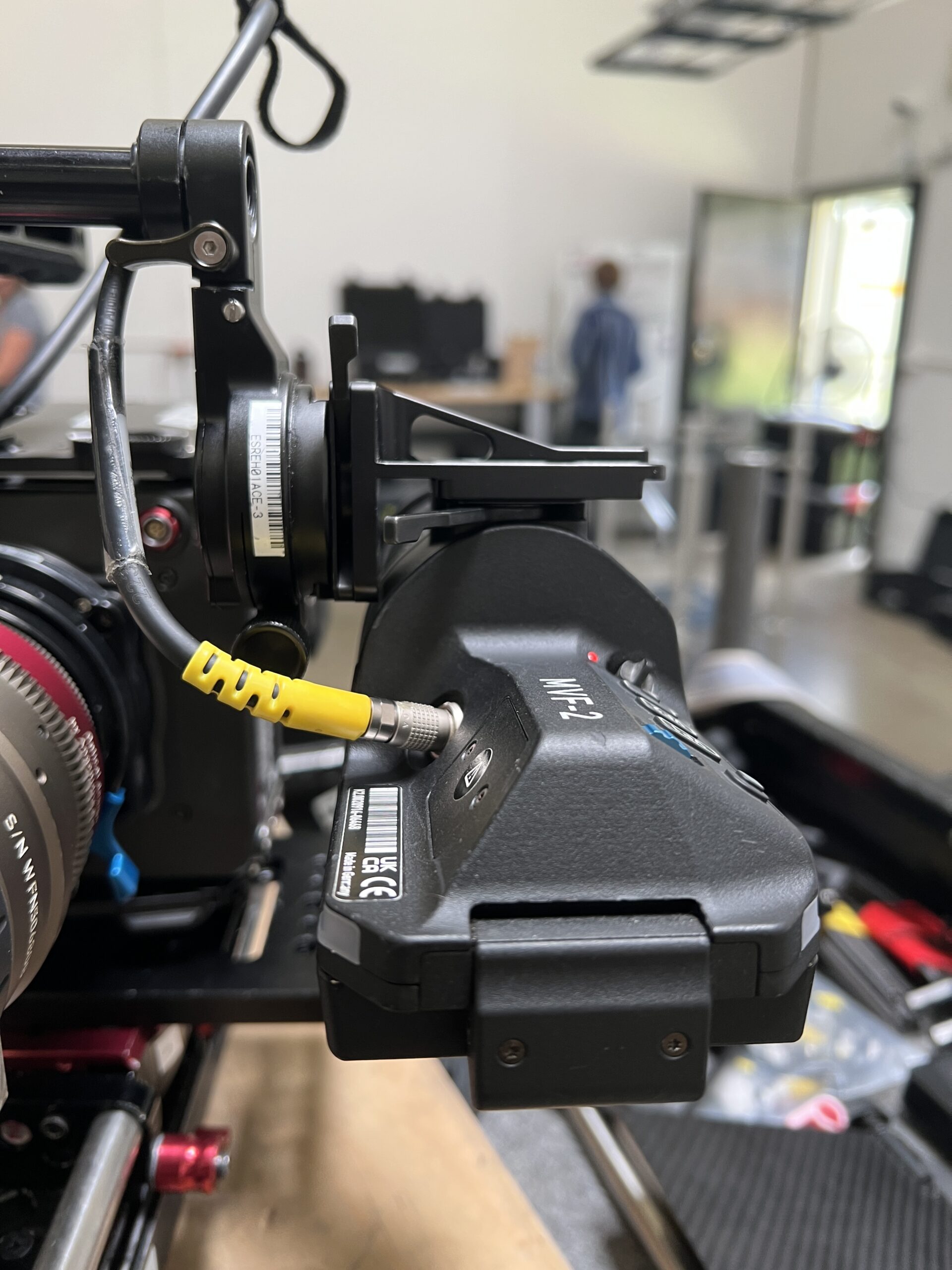
You must be logged in to post a comment.